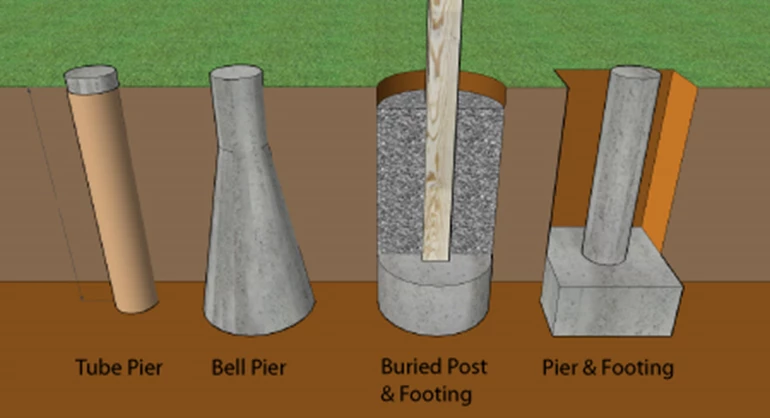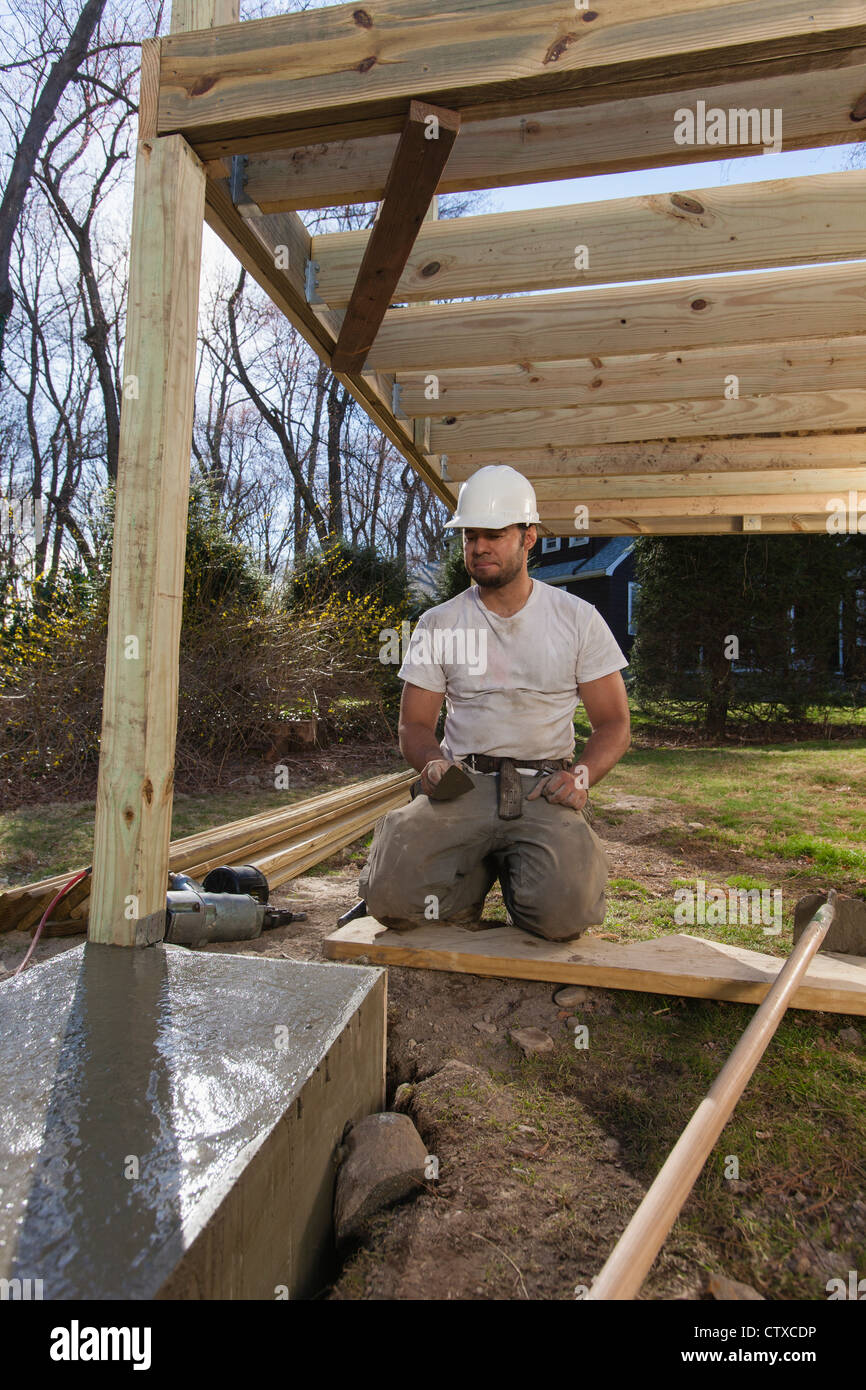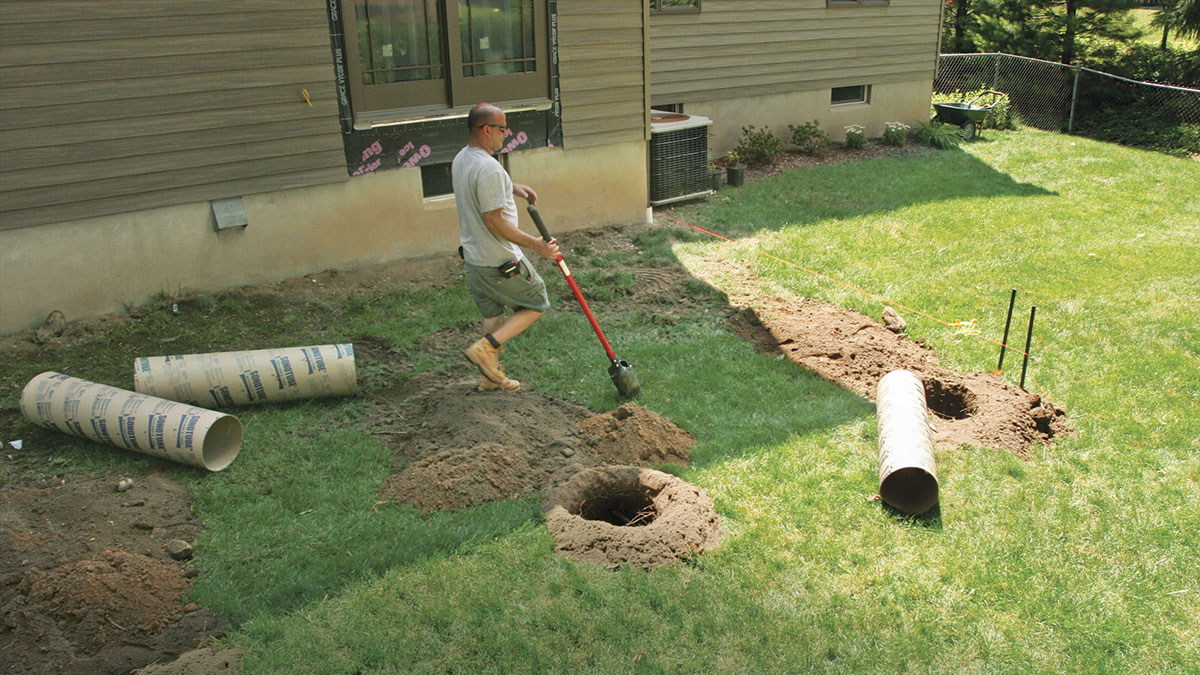Expert Tips for Setting Up Deck Footings to Support Your Outdoor Room
When it comes to constructing a deck, one of the most important components to consider is the installation of correct footings. These footings are the structure upon which your outdoor space will certainly rest, giving security and assistance for years to come. What exactly does it take to install deck footings properly?
Relevance of Correct Deck Footings
Correct deck grounds are vital for ensuring the security and long life of your outdoor room. Without solid and properly installed footings, your deck might end up being unsteady, leading to security threats and pricey fixings.

Along with security, proper deck grounds additionally contribute to the longevity of your exterior area (Deck Footings). Grounds that are developed and constructed to hold up against the elements and soil conditions in your area will certainly help stop the deck from shifting or settling over time. By guaranteeing the footings are effectively sized and installed, you can reduce the risk of damages to the deck framework, extending its lifespan and reducing the need for expensive fixings or replacements

Selecting the Right Sort Of Grounds
When choosing the appropriate type of footings for your deck, it is very important to consider aspects such as soil problems, local building ordinance, and the overall style of your outdoor room. The kind of footing you select will certainly play a crucial function in guaranteeing the stability and durability of your deck.
One typical kind of ground is the concrete footing. Concrete grounds are appropriate for the majority of dirt conditions and supply excellent support for decks.
In many cases, you may need to make use of customized grounds, such as heap grounds or deep foundations, if you are constructing a huge or multi-level deck. These grounds are developed to distribute the weight of the deck over a larger area, making certain security and preventing sinking or resolving.
Prior to picking a kind of footing, it is vital to consult regional building codes and policies to guarantee compliance. Additionally, think about the style and meant usage of your outdoor room. Variables such as the size, form, and load-bearing requirements of your deck will affect the kind of footing that is most ideal.
Preparing the Ground for Footing Setup
To properly prepare the ground for footing installment, it is necessary to assess the dirt conditions and take required actions to make certain stability and longevity of the deck. The very first action is to dig deep into the location where the grounds will certainly be mounted. The depth of the excavation will depend upon the frost line in your area and the certain requirements of the deck style. It is crucial to eliminate any plant life, rocks, or particles from the excavation to ensure a strong foundation.
Once the area has been dug deep into, the next step is to portable the soil. This can be done making use of a plate compactor or by using a hand meddle. Compacting the dirt aids to eliminate any type of gaps or air pockets, which can cause clearing up and instability in time.
After compacting the dirt, it is essential to lay a layer of gravel or smashed stone at the base of the excavation. This will certainly give water drainage and assistance to stop water from pooling around the footings, which can bring about erosion and instability.
Step-by-Step Overview to Installing Deck Footings
After correctly preparing the ground for footing installation, the following step is to start the process of mounting deck footings. This detailed guide will give you with a clear understanding of exactly how to mount deck footings for your outside area.
Establish the location: Start by marking the positions of the deck footings using stakes and string. Make certain that the places align with the design and design of your deck.
Dig the holes: Utilize a blog post opening digger or an auger to dig the openings for the grounds. The deepness and size of the openings should remain in conformity with local building ordinance and the certain demands of your deck style.
Degree the holes: Make use of a level to make certain that the openings are dug to the correct depth and are degree with each various other. (Deck Footings)
Add gravel: Location a layer of crushed rock at the bottom of each hole to improve drainage and prevent the timber from decomposing.
Insert the grounds: Put the footings into the holes, making certain they are level and plumb. Utilize a level and a measuring tape to ensure precision.
Safeguard the grounds: Put concrete into the openings around the grounds, filling them to the top. Make use of a post level to make certain the footings remain degree as the concrete collections.
Permit time for treating: Allow the concrete treatment according to the manufacturer's instructions prior to continuing with the deck building and construction.
Typical Mistakes to Stay Clear Of During Footing Setup
One important element to consider during the installment of deck footings is preventing usual blunders that can compromise the stability and durability of your outside space. While deck footings might seem like a simple and easy go to the website part of the building and construction procedure, neglecting certain factors can lead to pricey repair services and potential security threats down the line.

In addition, neglecting to install proper drain procedures can trigger water to accumulate around the footings, causing rot, decay, and the eventual weakening of the deck's foundation. In addition, making use of the incorrect kind of footing product or failing to properly secure the footings can jeopardize their structural honesty.
To stay clear of these errors, it is vital to seek advice from a specialist or comply with sector standards to guarantee correct footing installment. By doing so, you can make certain the security and longevity of your exterior room, providing a enjoyable and safe environment for many years to come.
Final Thought
Finally, setting up appropriate deck grounds is critical for the security and durability of your outside room. By selecting the right kind of footings and sufficiently preparing the ground, you can guarantee a strong structure for your deck. Following a detailed guide and avoiding typical his comment is here mistakes during footing installation will certainly even more boost the toughness and safety of your deck.
Appropriate deck grounds are vital for ensuring the security and durability of your outdoor space. The grounds serve as a link between the deck and the ground, allowing the weight of the deck view it now and its passengers to be distributed equally right into the soil.One common kind of footing is the concrete footing. Put the footings: Place the grounds into the holes, making certain they are level and plumb. Secure the grounds: Put concrete right into the holes around the footings, filling them to the top.